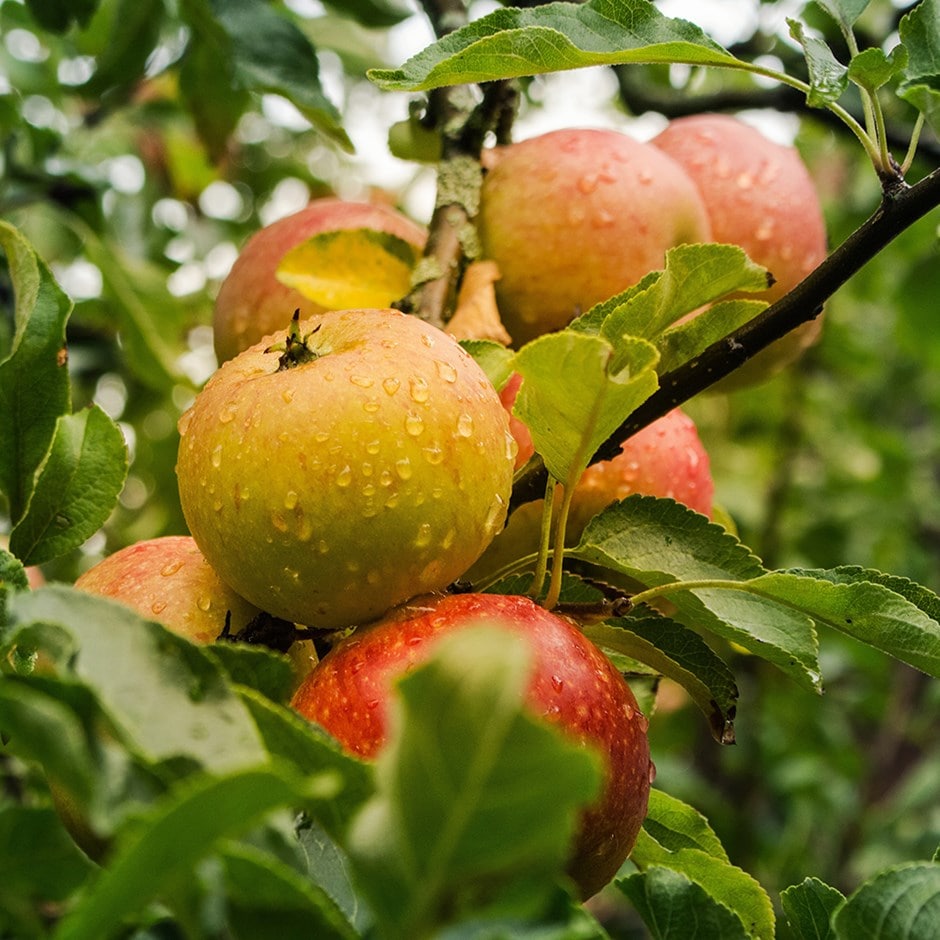apple 'Ribston Pippin'
eating / dessert apple
- bare root | MM106 root stock | 1.2m
- £26.99
- available to order from autumn 2024
Delivery options
- Standard £7.95
- Position: full sun
- Soil: moderately fertile, moist but well-drained soil
- Rate of growth: average
- Flowering period: April and May
- Hardiness: fully hardy
A robust, and award winning aromatic apple with a strong Victorian heritage. Its distinctive flavour peaks about a month after harvest, making it suitable for both eating and culinary uses, as well as producing a sweet and tart juice. This apple holds particular significance as the likely parent of the famous ‘Cox's Orange Pippin’. While 'Ribston Pippin' shares some of the aromatic characteristics of its renowned descendant when enjoyed fresh, it possesses a more pronounced sharpness, making it a preferred choice in culinary applications.
Pollination information: This apple belongs to pollination group 2, however it is partially self fertile, so does not need a pollinating partner to produce a crop of apples. For a bumper crop, it can be cross-pollinated with other apples in this group.
Pollination information: This apple belongs to pollination group 2, however it is partially self fertile, so does not need a pollinating partner to produce a crop of apples. For a bumper crop, it can be cross-pollinated with other apples in this group.
When planting your apple tree, prepare a hole up to three times the diameter of its root system. Fork over the base of the pit in readiness, incorporating plenty of organic matter into the backfill and planting hole. Avoiding frozen and waterlogged soil, trees should be planted out as they arrive. If you've ordered a bare root tree, soak the roots in a bucket of water for half an hour prior to planting - or if this is not possible, they can be heeled in temporarily, covering their roots with soil, or potted up. Once in the ground, stake firmly and keep the base weed-free. Apply a balanced fertiliser in early spring to support growth and fruiting and provide regular watering during hot, dry spells. The main winter prune, avoiding frosty conditions, involves removing dead, dying, and diseased wood to create an open crown. Additionally, reduce leaders and laterals by a third to establish an airy structure without crisscrossing branches. In August, summer prune by shortening side shoots longer than 20cm (8”) back to three leaves, promoting fruit ripening and encouraging more fruit buds.
